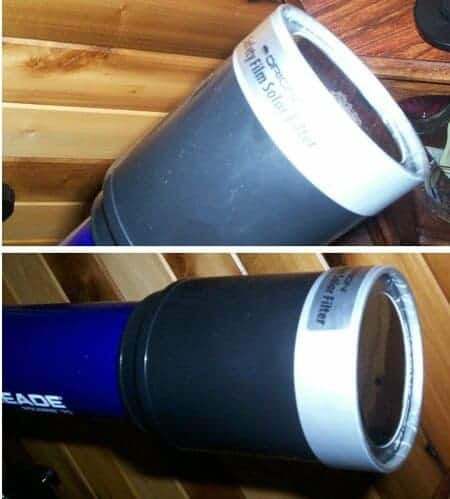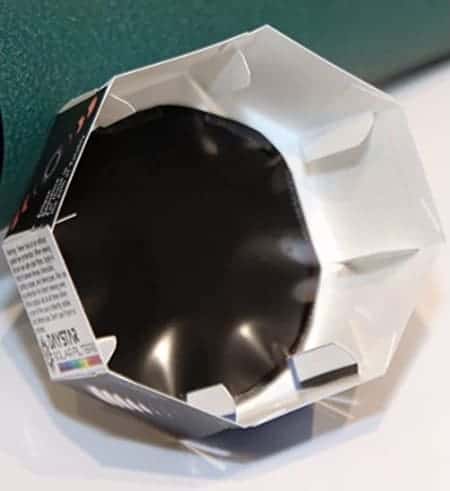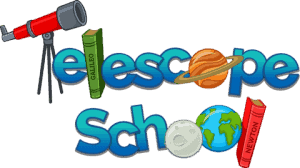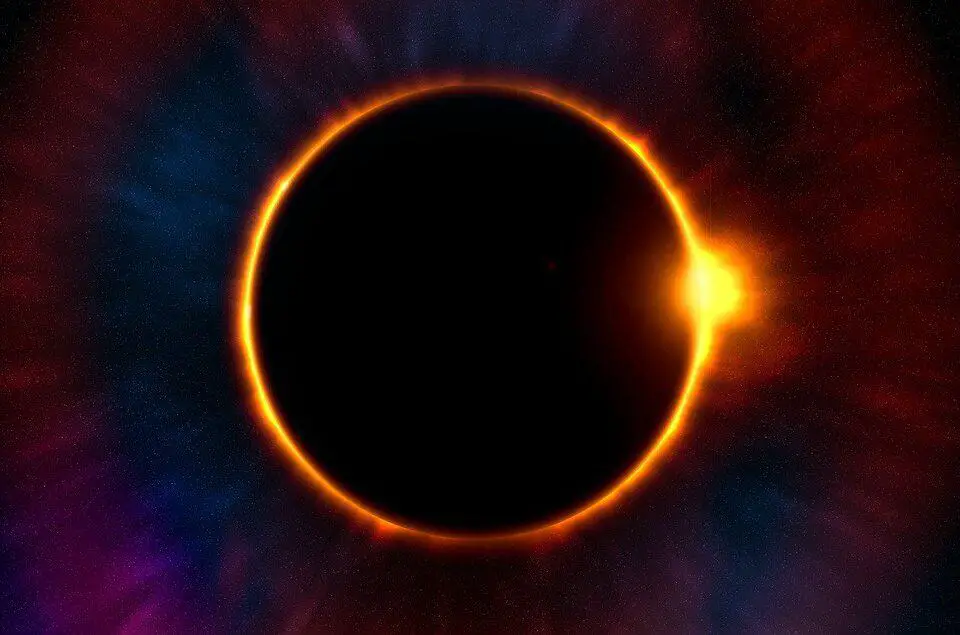Everyone at some point has been fascinated about how much energy the Sun can put out. Because of that energy, we have always been told to not look at the Sun. Let’s see why.
- On a Telescope, one should use an aperture filter comparable to a #14 dark glass “welder’s” shield. A welder’s shield of #14 or higher is safest.
- If no aperture filter use the shadow box technique. A darkened box with a pin hole toward the eclipse so a white piece of paper acts as a projector screen.
Let’s get a little more detailed about Eclipse viewing. Check out 2024 Solar Eclipse Facts
First What You Should Not Do
Never look at the Sun. Especially never look at the Sun with a telescope.
You should avoid using a solar lens (a dark glass eye piece) for an eclipse. The intense magnification of light can cause it to shatter at your eye.
Safety first, right?
What You Shouldn’t Do at a Solar Eclipse
To help explain this section, I will ask you to go back to your childhood. Do you remember using a magnifying glass to burn ants on an ant hill or catch stuff on fire?
Well, a telescope is essentially the same thing. If you think about this if you shouldn’t look at the sun with the naked-eye, why do you want to magnify that 50 or a hundred times? Not the smartest thing to try!
Even if you didn’t go blind, you stand the risk of getting a sunburn on your skin layers of the eyeball. Essentially it would be really bad welder’s flash.
Also, I do not recommend using a filtered eyepiece just in case the heat of the Sun before and after the eclipse could possibly be heated to the point of fracture. You know, from the sudden temperature change.
What You Can Do During a Eclipse

On the Telescope: You can safely filter the Sun, and you’re putting on sunglasses or a welder’s mask on the end of your telescope. Yes, the big end called the aperture, where the light is gathered and directed to a focused point.
This way, you are protecting the telescope that is magnifying the Sun’s rays on the telescope’s tube wall and other parts as the Sun moves across the sky and possibly not in perfect alignment.
Here are the aperture filters that I recommend some are made specifically to cover over the aperture. The other one is using the #14 filter film and making a filter yourself.
Without an Aperture Filter: one could basically set up a shadow box at the end of your telescope. So, you are using your telescope to magnify the eclipse, but not risking your eyesight to witness it.
Other Methods To View A Solar Eclipse
The old classic way of doing it is by taking a cereal box (or a box similar to it) and cutting a hole for your head or eyes to peek in through it. Alongside, or at the back and away from your head, you put a pinhole and make sure the other end where the pinhole would shine make it white with like with printer paper.
A link below is available to get you to what I think are the best instructions for the most natural accessible materials.
Of course, you can always just get some glasses for the whole family. Here is what they look like. If you have a bunch of people that need to see at the same time this may be your quick and easy approach. Just make sure they are ISO certified!
My Recommended Filters For Your Telescope
I’d like this full aperture eclipse filters because you’re protecting the telescope as well as your eye. Sometimes they are not available in the size of your telescope though.
Here’s the link to Amazon so you can shop for your aperture size for your own eclipse filter. Link Here. It is your best easiest bet for a secure and safest use and reuses later on.
Okay, now what, you checked, and they do not have full aperture eclipse filters to fit your telescope. Now is the time that you take a look at the #14 plastic filter paper, or film. Here is an Amazon link to that. Link Here

How you would use it is by taking it and molding it over the aperture and securing it with multiple rubber bands, preferably in case one breaks. You also can use packaging tape and or duct tape, yeah, because you can use duct tape for anything. Here you would make a cup shape about two-and-a-half 3 and 1/2 in deep to act as a lens cap or shield to slide over your end on your telescope tube.
Links To Eclipse Stuff?
Many people have taken the time and done some pretty cool informative stuff here already. Rather than me to redo something that probably not be as good as what was already made. Feel free to check them out
Here is a great website to build your own shadow box.
Here’s a great YouTube video to create your own shadow box.
Here’s an excellent video on how to view the eclipse with a telescope
Need More?
Viewing an eclipse can be a once-in-a-lifetime event, so it is something that you should try and do. However, you gotta do it safely! Otherwise, you may not be able to see the other billions of things that are there for you to view.
This is not a very long article, but other materials go into more detail that may be a benefit to you.
Quick Tips for Improved Telescope Viewing
What a Barlow Lens Means and Does for Your Telescope
The Top 10 Things For Your Telescopes Go Bag


